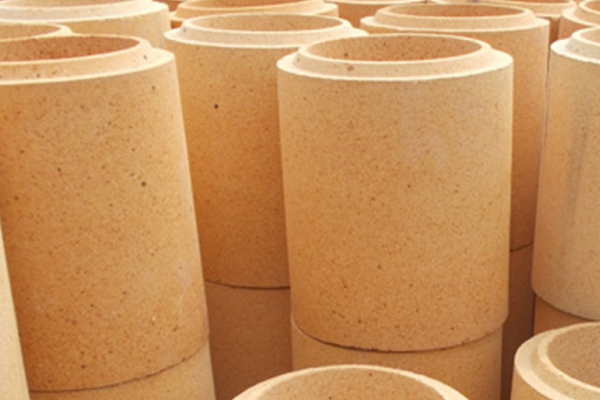導入
高温プロセス, 金属精製など, ガラス製造, とセメント生産, 極端な温度や厳しい環境に耐えることができる材料が大幅に劣化することなく要求します.
耐火レンガは、高温プロセスに不可欠なコンポーネントです, 彼らが機器を保護するので, 熱損失を防ぎます, 温度の均一性を維持します. 耐火レンガは、さまざまな材料で作ることができます, それぞれに独自の特性と用途があります.
耐火物ごとに、高温プロセスでさまざまな材料で作られた耐火レンガの役割について説明します, それらのプロパティを含む, 種類, およびアプリケーション.


耐衝撃性レンガの特性
耐火レンガは、高温や過酷な環境に抵抗するように設計されています, それらを高温プロセスで使用するのに理想的にします. そのようなアプリケーションに適した耐火レンガの特性には:
高い融点: 耐火性のレンガには融点が高くなっています, 溶けたり劣化せずに高温に耐えることができます.
低い熱伝導率: 難治性レンガの熱伝導率は低いです, これは熱損失を防ぎ、プロセスの温度の均一性を維持するのに役立ちます.
化学的安定性: 炎耐性レンガは化学的に安定しており、腐食や侵食に耐性があります, 長期的な耐久性を確保します.
機械的強度: 耐火レンガは機械的強度が高くなっています, 壊れずに機械的ストレスや振動に耐えることができます.
耐火レンガの種類
耐火レンガは、さまざまな材料で作ることができます, それぞれに独自の特性と用途があります. 耐火ブリックの主なタイプはです:
Fireclayレンガ: Fireclayレンガは、粘土やその他の材料から作られています. それらは低コストで、低温アプリケーションで一般的に使用されます, 住宅暖炉など.
シリカレンガ: 珪石レンガ 二酸化シリコンから作られています. 彼らは高い融点を持っており、ガラス製造で一般的に使用されています.
マグネシアれんが: マグネシアレンガは、酸化マグネシウムから作られています. 彼らは高い融点を持ち、スチール製造で一般的に使用されます.
高アルミナ煉瓦: 高アルミナレンガは、酸化アルミニウムから作られています. それらは高い融点を持ち、一般的に高温アプリケーションで使用されています, 炉の裏地など.
クロムれんが: クロムレンガは、酸化クロムから作られています. それらは高い融点を持っており、フェロクロムおよび他の合金の生産に一般的に使用されています.


耐火レンガの用途
耐火レンガは、さまざまな高温プロセスで使用されます, 金属精製を含む, ガラス製造, とセメント生産. 異なる材料から作られた耐火レンガの一般的な用途のいくつかは:
炉の裏地: 耐火レンガは、炉の内部を並べるために使用されます, 炉の壁を高温から保護し、熱損失を防ぐ.
プロセスの温度と環境に応じて、さまざまな種類の耐火レンガが使用されます. Fireclayレンガは、一般的に低温アプリケーションで使用されます, 一方、アルミナレンガは高温用途で使用されます.
キルンライニング: 難治性のファイアブリックは、kirnsに並ぶために使用されます, 製造に使用されます セラミックス, セメント, およびその他の材料.
耐火性の裏地は、ki壁を高温から保護し、熱損失を防ぎます. シリカレンガは、融点が高く、化学的安定性があるため、ki骨の裏地で一般的に使用されています.
るつぼ: 難治性の火のレンガは、るつぼを作るために使用されます, 鋳造プロセス中に溶融金属を保持するために使用される容器です.
難治性材料は、るつぼが溶けるのを防ぎ、金属が一貫した温度に残ることを保証します. マグネシアレンガは、融点が高いため、腐食に対する耐性のために、るつぼで一般的に使用されます。.
ガラス炉: 火のレンガは、ガラス製造業で広く使用されています.
ガラス炉には、高温や過酷な化学環境に耐えることができる裏地が必要です. シリカレンガは、融点が高く、アルカリに対する抵抗があるため、ガラス炉の裏地でよく使用されています。.
製鋼: 耐火レンガは、鉄鋼船に並ぶために鋼製造に使用され、高温と化学反応から保護するためにそれを保護します.
マグネシアレンガとアルミナレンガは、融点が高いため、鉄鋼メーキングで一般的に使用されています。.
耐火レンガのメーカーとサプライヤー
結論は, 耐火レンガは、機器に保護を提供することにより、高温プロセスで重要な役割を果たします, 熱損失の防止, 温度の均一性を維持します.
耐火レンガの特性, 高い融点など, 熱伝導率が低い, 化学的安定性, そして機械的強度, さまざまな高温アプリケーションでの使用に適しています.
違う 耐火レンガの種類, Fireclay Fireblicksなど, シリカ耐火レンガ, マグネシアレンガ, 高アルミナ質レンガ, クロムレンガ, プロセスの温度と環境に応じて使用されます. 高温プロセスで適切な難治性レンガを使用することで、長期的な耐久性と効率を確保できます.
